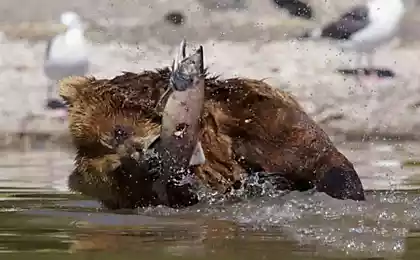2293
What is this miracle? (14 pics + 1 video)
Who is it? It looks like a hairy snake, and it can photoshop?
Do not know this creature?
Let's face it.
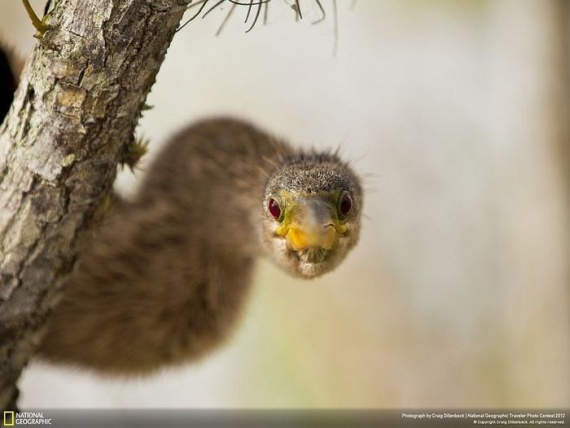
The name darters have received for a long, flexible neck, giving them a resemblance to produce a snake attack. We have anhinga and the local name - Angina.
Anhinga lives in the hot tropical climate zone: Central America, a small area of the southern tip of North America, as well as in the northern regions of South America. Usually serve as the abode of her extensive freshwater marshes and wooded lakeside shores of creeks, large and small rivers. Adapted to life near the brackish water, it often settles in marine lagoons and river estuaries, especially in places teeming with dense mangroves.
Habitat. Lives in the South, Central and North America.

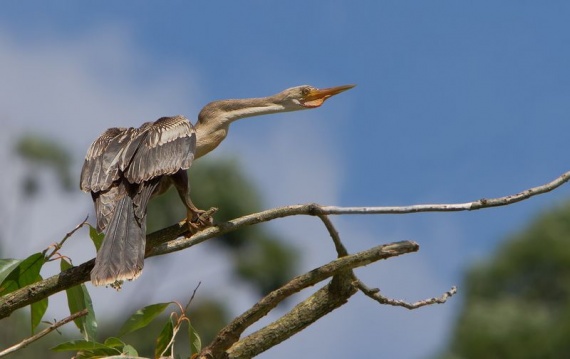
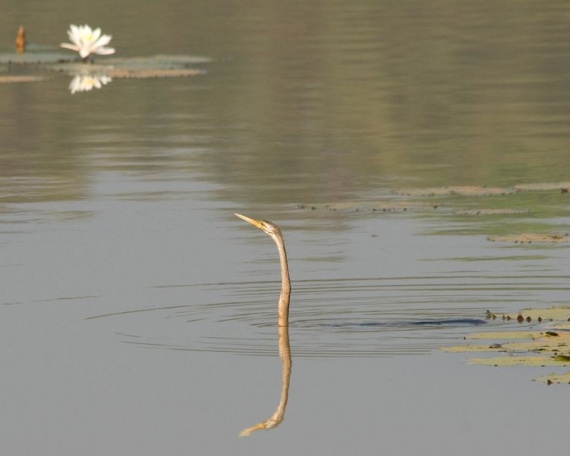
Anhinga spends a lot of time in the water, excellent diving and swimming, not only other waterfowl, but in his own way - plunging the whole body in the water, so that the outside can see only the head and neck. Before dives bird exhales hidden inside the body of the air sacs and impacts the wings to get rid of trapped air bubbles in the feathers. The streamlined shape allows Darter quickly swim, rowing two legs. Happy adult birds are hunted in small flocks. Sitting on a rock or a branch hanging over the water, looking out for prey darter.
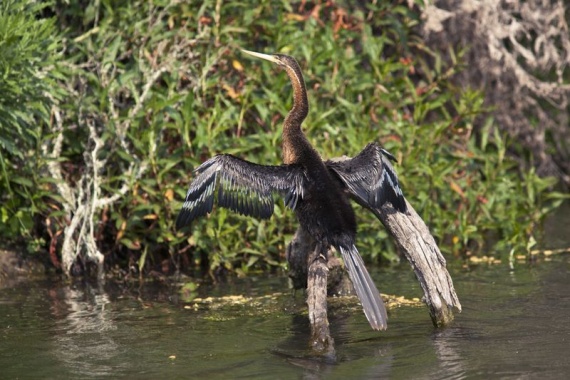
Hardly seems fitting big fish, the bird immediately dives and swims under water to the victim with a curved neck; at a distance of hitting it instantly straightens his neck and impales prey sharp beak, and then rises to the surface. Tossing fish in the air energetic movement of his head, Darter deftly grabs her beak and swallowed whole. The basis of the diet darters make different kinds of fish, as well as frogs, newts, crustaceans and insects. After bathing darter as cormorants, dries its wings in the sun: its feathers are not protected by fat and grease in water soak through.

Darter perfectly swims and dives. She can go for long periods under water in pursuit of its prey until it is from her at a distance of one meter. Then the bird promptly throws like a harpoon, his muscular neck in the direction of production. This darter does not open its beak, and sews the victim as a needle. Emerging onto the surface of a fish impaled on its beak, the bird sharp movement throws more live prey in the air, quickly reveals the beak and catches fish.
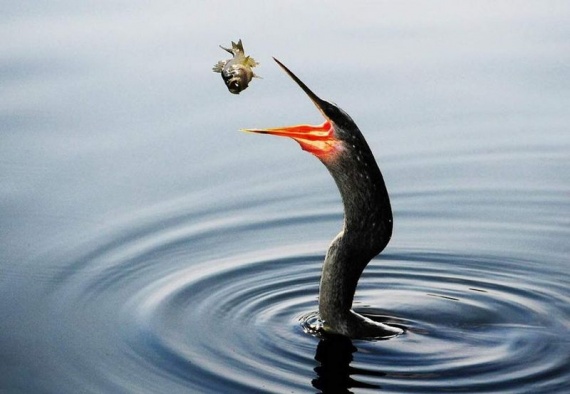
Interestingly, not all movement darter does instinctively. Some of them they must learn by hard training and monitoring senior. Young birds often throw the fish much higher and can not because of this catch her, so she falls into the water. So once darter chick throws and catches her wand, thereby practicing techniques. Besides fish darters eat crustaceans, frogs, newts and water insects.

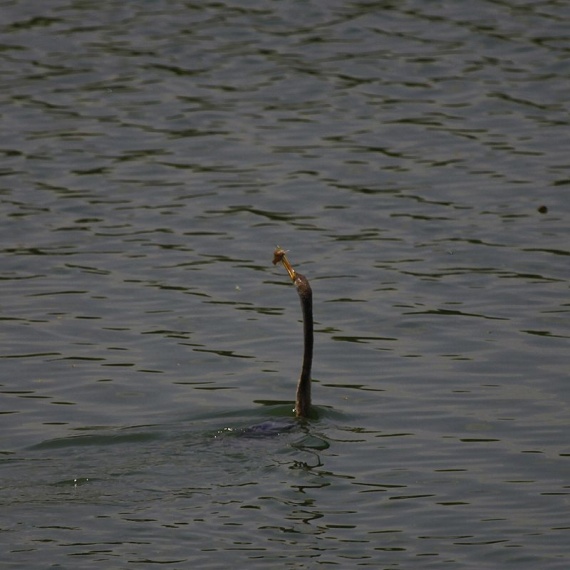
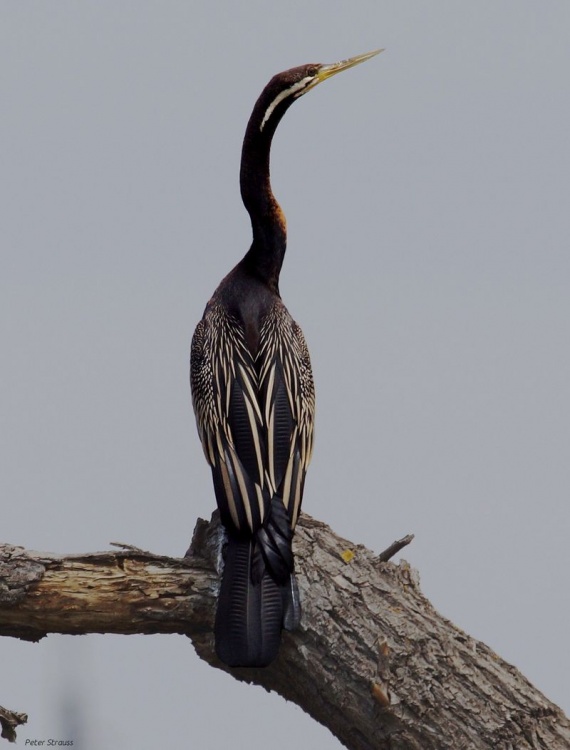
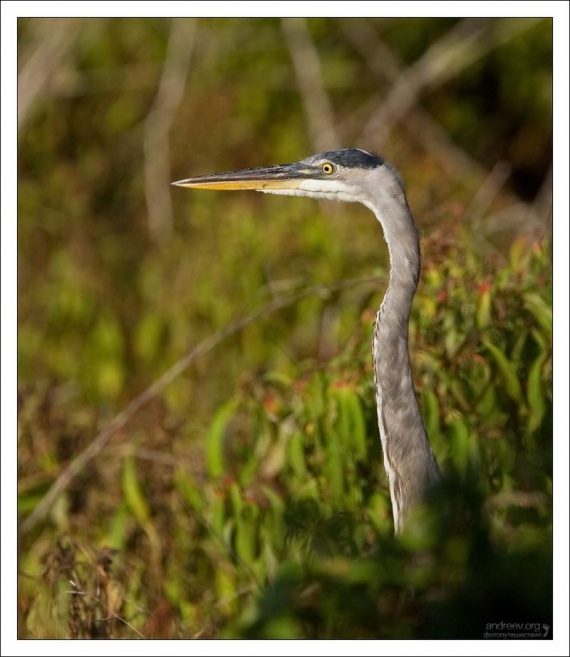
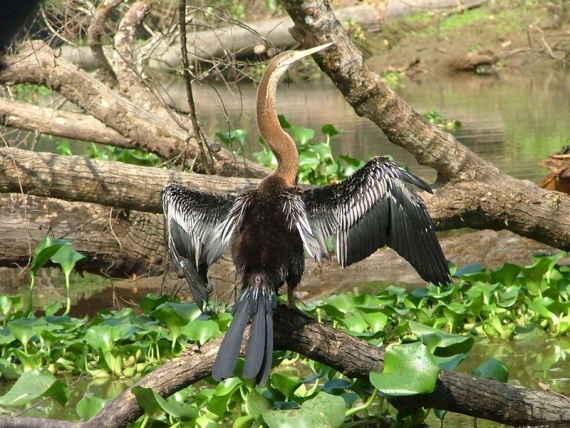

Did you know?
* Hunt is so unusual way Darter allows special structure of the neck, consisting of 20 vertebrae. In the eighth and ninth vertebrae are bony growths, which are attached to a strong tendon, and strong neck muscles can quickly shrink and stretch. At rest, the birds neck held taut tendons in the form of the letters S, and when you reset the tendons to "trigger" instantly thrown forward. * To eat your catch, Darter sharply pulls the neck, throwing him out of the beak in the air. If this fish, it should throw up so that the bird can swallow it head first. Young and inexperienced Darter this stage hunting often is not easy. * Beak darters has very sharp edges with curved front small teeth, which, like arrowheads, easy to pierce the victim's body. * The body is covered with dark olive feathers with a metallic sheen. Lower ch.p ib lighter brownish neck top. The upper side of the wing light: to see the white feathers flapping struychaty drawing.

Source: faunazoo.ru, givotnie.com
Do not know this creature?
Let's face it.

The name darters have received for a long, flexible neck, giving them a resemblance to produce a snake attack. We have anhinga and the local name - Angina.
Anhinga lives in the hot tropical climate zone: Central America, a small area of the southern tip of North America, as well as in the northern regions of South America. Usually serve as the abode of her extensive freshwater marshes and wooded lakeside shores of creeks, large and small rivers. Adapted to life near the brackish water, it often settles in marine lagoons and river estuaries, especially in places teeming with dense mangroves.
Habitat. Lives in the South, Central and North America.



Anhinga spends a lot of time in the water, excellent diving and swimming, not only other waterfowl, but in his own way - plunging the whole body in the water, so that the outside can see only the head and neck. Before dives bird exhales hidden inside the body of the air sacs and impacts the wings to get rid of trapped air bubbles in the feathers. The streamlined shape allows Darter quickly swim, rowing two legs. Happy adult birds are hunted in small flocks. Sitting on a rock or a branch hanging over the water, looking out for prey darter.

Hardly seems fitting big fish, the bird immediately dives and swims under water to the victim with a curved neck; at a distance of hitting it instantly straightens his neck and impales prey sharp beak, and then rises to the surface. Tossing fish in the air energetic movement of his head, Darter deftly grabs her beak and swallowed whole. The basis of the diet darters make different kinds of fish, as well as frogs, newts, crustaceans and insects. After bathing darter as cormorants, dries its wings in the sun: its feathers are not protected by fat and grease in water soak through.

Darter perfectly swims and dives. She can go for long periods under water in pursuit of its prey until it is from her at a distance of one meter. Then the bird promptly throws like a harpoon, his muscular neck in the direction of production. This darter does not open its beak, and sews the victim as a needle. Emerging onto the surface of a fish impaled on its beak, the bird sharp movement throws more live prey in the air, quickly reveals the beak and catches fish.

Interestingly, not all movement darter does instinctively. Some of them they must learn by hard training and monitoring senior. Young birds often throw the fish much higher and can not because of this catch her, so she falls into the water. So once darter chick throws and catches her wand, thereby practicing techniques. Besides fish darters eat crustaceans, frogs, newts and water insects.






Did you know?
* Hunt is so unusual way Darter allows special structure of the neck, consisting of 20 vertebrae. In the eighth and ninth vertebrae are bony growths, which are attached to a strong tendon, and strong neck muscles can quickly shrink and stretch. At rest, the birds neck held taut tendons in the form of the letters S, and when you reset the tendons to "trigger" instantly thrown forward. * To eat your catch, Darter sharply pulls the neck, throwing him out of the beak in the air. If this fish, it should throw up so that the bird can swallow it head first. Young and inexperienced Darter this stage hunting often is not easy. * Beak darters has very sharp edges with curved front small teeth, which, like arrowheads, easy to pierce the victim's body. * The body is covered with dark olive feathers with a metallic sheen. Lower ch.p ib lighter brownish neck top. The upper side of the wing light: to see the white feathers flapping struychaty drawing.

Source: faunazoo.ru, givotnie.com

